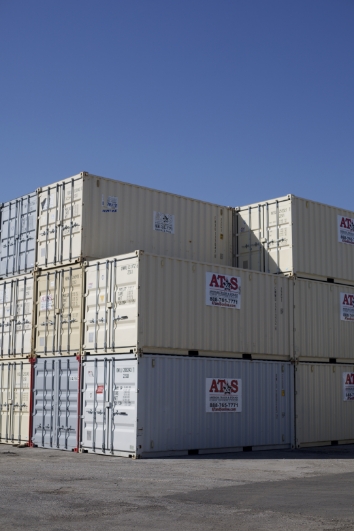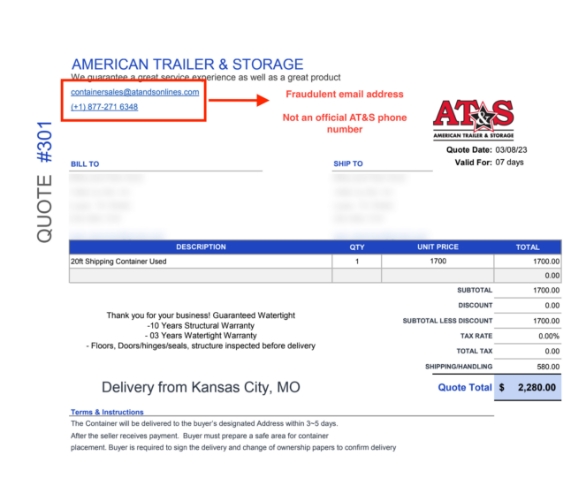Customer Service
Delivery/Prep information
Preparing For delivery
Please keep these requirements in mind when considering delivery location to help ensure our delivery drivers can do their job to the best of their ability. Entrance/Egress Requirements:
For tractor-trailers, a minimum of 70 feet of clear space is required directly in front of the container placement to allow for safe entry and exit. For roll-off trucks, please ensure at least 50 feet of clearance in front of the container.
Vertical Clearance
- Assess the delivery route for any clearance restrictions exceeding 16’, including bridges, power lines, overhanging structures, and low-lying branches.
- Verify that the designated delivery pad offers unobstructed vertical clearance exceeding 16′. Ensure any overhead obstacles are cleared.
- Communicate any potential clearance concerns to our delivery team before their arrival.
Horizontal Clearance
- 20’ Containers: Delivered on a highly maneuverable Roll-Back Truck, requiring extensive open space for unloading.
- Minimum clearance requirement: 80’ of unobstructed space
- Verify that the designated delivery pad offers unobstructed vertical clearance exceeding 16′. Ensure any overhead obstacles are cleared.
- 40’ Containers: Transported by a semi-pulling tilt-deck trailer, demanding ample space for safe maneuvering due to its size and limitations on off-road capability.
- Minimum clearance requirement: 160’ of unobstructed space
Ground Conditions
We are unable to deliver your container if the ground exhibits any of the following:
Excessive Moisture
Unstable Surfaces
Icy Conditions
On-site preparation
The bottom of a shipping container is structured with steel floor joists. While fantastic for ventilation, these gaps leave the steel vulnerable to damage.
The solution? Lift your container off the ground! A little elevation makes a big difference with on-site storage, keeping moisture at bay and preserving your investment. Here are some options to consider:
Gravel Pad (Preferred Option)
Gravel Pad Area Sizing:
Benefits
Economical: The most budget-friendly option, utilizing crushed gravel or pea gravel.
DIY-Friendly: Installation involves minimal tools and straightforward leveling practices.
Optimal Drainage: Freely flowing gravel facilitates rapid water dissipation, preventing stagnant puddles.
Adjustable: Adding or removing gravel allows for precise leveling adjustments.
Considerations
Weed Control: Regular maintenance may be required to prevent weed growth within the gravel.
Stability: This may not be ideal for exceptionally heavy loads, as settling or shifting can occur.
Cap Blocks
Benefits
Exceptional Stability: Concrete blocks provide unwavering support, readily accommodating significant weight.
Durable: Both concrete and recycled plastic options offer long-lasting resilience.
Simple Installation: Requires precise positioning but minimal technical expertise.
Adaptable: Stacking blocks allow for adjustable height variations.
Considerations
Cost: Concrete blocks represent a higher initial investment compared to gravel.
Leveling Precision: Careful placement of blocks is crucial for ensuring proper leveling.
Cross Ties
Benefits
Environmentally friendly: Opt for recycled ties for a sustainable choice.
Durable: Pressure-treated wood resists rot and decay.
Easy to level: Stack ties or adjust spacing for precise leveling.
Considerations
Regulations: Check local regulations regarding the use of cross-ties.
Maintenance: Wood may require occasional treatment to prevent deterioration. Eventually, you will have to replace the cross-ties.
Heavy: Installing cross ties requires manpower or machinery.
General Uses

AT&S specializes in shipping container sales for countless uses. From new one trip containers, cargo worthy certified containers or economical weather tight storage containers. AT&S has the experience to ensure you get the most suitable container for your needs.
Whether you’re looking for a safe place to store seasonal inventory or overstock, moving to a new location, or need additional space while you remodel your property, AT&S has the affordable storage solutions you need.
Costs can rise quickly if your job site is hit by vandals, thieves, or weather damage. Protect your tools and materials with our weather tight, secure storage units.
Whether you’re looking for additional trailers to handle a spike in business or provide added storage at your dock, AT&S offers a variety of practical, affordable solutions.
AT&S has a wide variety of affordable secure storage solutions for your furniture, recreational equipment, supplies, records, and anything else you might have.
General Uses Include:
- Retail
- Construction
- Warehouse
- Transportation/Distribution
- Storage
Contents insurance
Your container protection plan
Coverage Amounts
- $2,000
- $3,000
- $5,000
- $10,000
Deductibles
- $250
Contents Insurance
- Coverage up to $10,000
$500 for Coverage amounts exceeding $10,000.
Premium coverage
- Water Damage
- Lightning
- Windstorm or hail
- Weight of snow, ice, or sleet
- Mold and mildew
- Explosions or sonic boom
- Fire and smoke
- Pests and vermin
- Burglary
- Riots or vandalism
Filing a claim
Website: storageprotectors.com/file-a-claim
Please direct all insurance-related questions and requests to Storage Protectors:
Storage Protectors
The Storage Protectors' Program provides comprehensive contents coverage and adds an additional layer of protection for your stored contents. Purchasing Contents coverage from SP alleviates concerns about not being protected against unexpected potential losses.
The Storage Protectors Container Contents and Damage Waiver Insurance Program is underwritten by Obsidian Specialty Insurance Company, the “Carrier.” SafeLease Insurance Services. LLC is the Managing General Agent of the Carrier. The Program is administrated by Airpark Insurance and Risk Management, LLC, License No. 3000750988 , AZ License No. 1917680, CA License No. 0743598.
Contact Us
6991 E Camelback Road, Suite D-300.
Scottsdale, AZ 85251
(480) 900-8300
info@storageprotectors.com
Scam alert
Protection from Scammers: Tips from AT&S
Recognizing Fraudulent Activity
Signs to look for:
Requests to Wire Funds Sight Unseen: AT&S will never ask you to wire funds without proper DocuSign documentation and verification.
Impersonation of AT&S (Employee Names and Signatures): Be cautious of emails or documents claiming to be from AT&S employees with suspicious or fake signatures.
Use of Non-AT&S Email Domains: The official AT&S email domain is @atandsonline.com. If you receive emails from a different domain claiming to be from AT&S, please report them immediately.
Protect Yourself
Verify Communication: If you are unsure if you have been in contact with a scammer, verify the authenticity of any communication, and contact us directly using the phone numbers listed in the section below.
Report Suspicious Activity: If you encounter any suspicious emails not from the official AT&S email domain (@atandsonline.com), or individuals claiming to represent AT&S, please report them immediately to prevent further fraudulent activity.
Fraudulent Documentation Examples
Official AT&S Email Address
name@atandsonline.com
Unofficial Email Address
name@atandsonlines.com
Example: Quote Documentation

Example: AT&S Logo

National Portable Storage Association
About npsa
NPSA members offer a wide variety of storage containers, shipping containers, cargo containers, storage units, storage trailers and much more for sale and/or rent.
A primary reason that companies join and support an association is to receive services and benefits tailored toward your company. The NPSA strives to develop products and services that help you increase business or reduce expenses. If we can assist you in any way, please do not hesitate to call upon us.
Mission Statement
The NPSA:
- Is a valuable resource for its members in starting, growing, and maintaining a portable storage business.
- Encourages integrity and high-quality products/services within the portable storage industry.
- Is the only entity identifying best practices relative to portable storage industry workforce management, business practices, safety, and regulation compliance.
- Is the premier entity in providing its member companies with educational products, programs, and services relevant to the portable storage industry.
- Provides the best possible avenues for exchanging information and developing professional and/or social contacts within the portable storage industry.
- Provides advocacy leadership and guidance at the federal, state, and local levels on issues of importance to the portable storage industry.